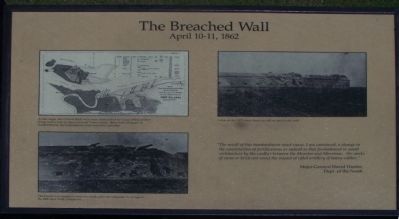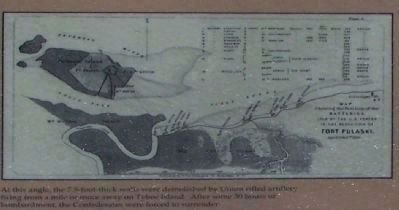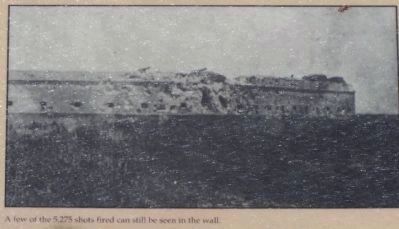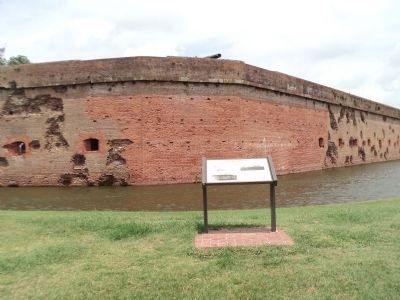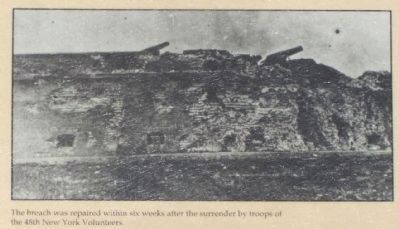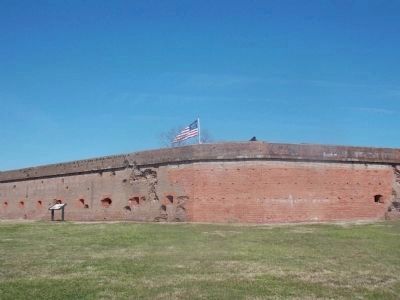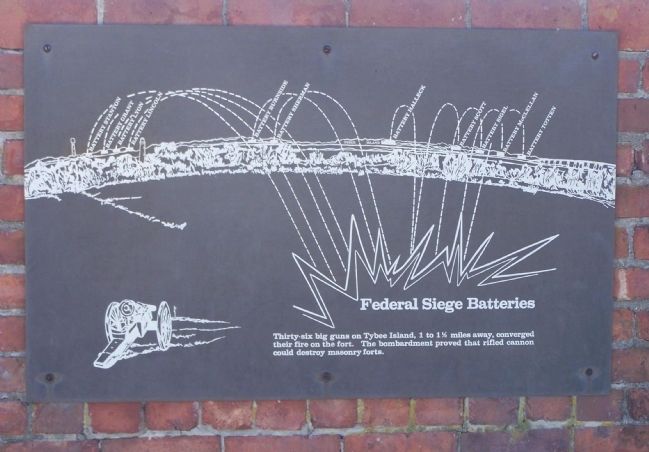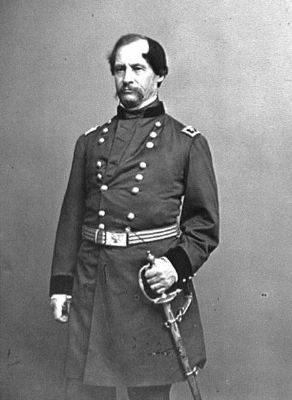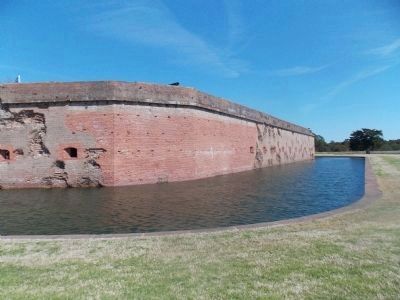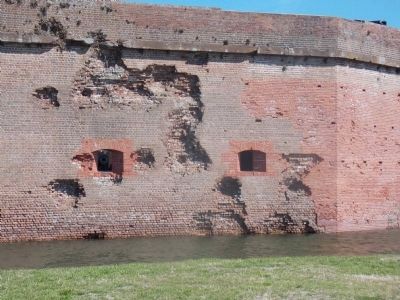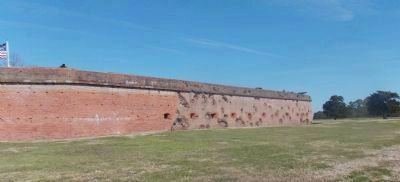Tybee Island in Chatham County, Georgia — The American South (South Atlantic)
The Breached Wall
April 10-11, 1862
Major General David Hunter,
Dept. of the South
Erected by National Park Service.
Topics. This historical marker is listed in these topic lists: Forts and Castles • War, US Civil.
Location. 32° 1.612′ N, 80° 53.364′ W. Marker is on Tybee Island, Georgia, in Chatham County. Marker can be reached from Islands Expressway (U.S. 80), on the left when traveling east. Located at Fort Pulaski National Monument. Touch for map. Marker is in this post office area: Tybee Island GA 31328, United States of America. Touch for directions.
Other nearby markers. At least 8 other markers are within walking distance of this marker. Shifting Shoreline (within shouting distance of this marker); Brooke Rifle (within shouting distance of this marker); 4.5 Inch Blakely Rifle (within shouting distance of this marker); Prepared for Battle (within shouting distance of this marker); A Devastating Bombardment (within shouting distance of this marker); Through the Thick Brick Wall (within shouting distance of this marker); Federal Siege Batteries (about 300 feet away, measured in a direct line); Red-hot Shot (about 300 feet away). Touch for a list and map of all markers in Tybee Island.
More about this marker. In the upper left is a wartime map of Fort Pulaski, captioned, At this angle, the 7.5-foot-thick walls were demolished by Union rifled artillery firing from a mile or more away on Tybee Island. After some 30 hours of bombardment, the Confederates were forced to surrender.
In the lower left is a photograph of the fort after surrender. The breech was repaired within six weeks after the surrender by troops of the 48th New York Volunteers. Another photo in the upper right is captioned, A few of the 5,275 shots fired can still be seen in the wall.
Also see . . . Fort Pulaski. National Park Service (Submitted on November 2, 2008, by Mike Stroud of Bluffton, South Carolina.)
Credits. This page was last revised on May 3, 2020. It was originally submitted on November 2, 2008, by Mike Stroud of Bluffton, South Carolina. This page has been viewed 1,350 times since then and 27 times this year. Photos: 1, 2, 3. submitted on November 2, 2008, by Mike Stroud of Bluffton, South Carolina. 4. submitted on August 8, 2013, by Bill Coughlin of Woodland Park, New Jersey. 5. submitted on November 2, 2008, by Mike Stroud of Bluffton, South Carolina. 6. submitted on March 10, 2013, by Stanley and Terrie Howard of Greer, South Carolina. 7, 8. submitted on November 2, 2008, by Mike Stroud of Bluffton, South Carolina. 9, 10, 11. submitted on March 10, 2013, by Stanley and Terrie Howard of Greer, South Carolina. • Craig Swain was the editor who published this page.
